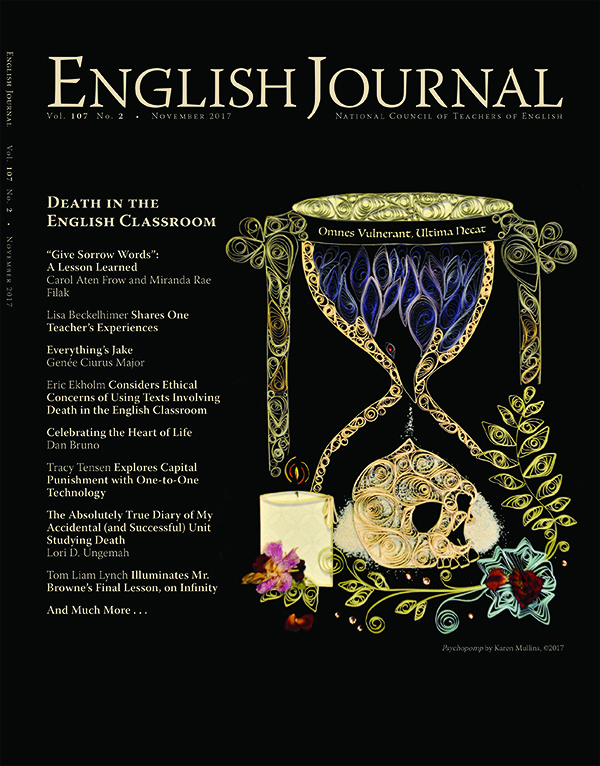This post is written by member Julie Gorlewski, editor of English Journal.
Classroom walls are permeable. Teaching English engages the lives of students, and classroom interactions spill into the world beyond school. As communities of learners, we affect one another; our joys and sorrows are powerfully mutual. Events, large and small, in our lives intersect through one another as well as through the texts we share.
Through this dynamic, teachers and students learn empathy, trust, and love. Some of these we learn through their absence, but we strive for our classrooms to be spaces where students and teachers are thoughtful, vulnerable, and honest. In our classrooms, young people can learn to rely on support from each other, as well as on the life experiences of their teachers. For adolescents, such opportunities are essential. When my father died, my children were in high school and college. At his memorial service, my sister-in-law confirmed how hard it is for young people to lose a close family member. She made a memorable statement: “They don’t know that they won’t always feel this way. They don’t know that grief changes.” Although she meant those words in relation to my children, they were helpful for me as well. In the midst of fresh grief, we forget that the pain will change. It may never disappear, but it will become bearable. We will again find beauty in the world, and even joy.
Among the paradoxes of being human is the knowledge of mortality. Experiencing serious illness and death shifts our worlds into sharp relief; suddenly what matters, and what doesn’t, is perfectly clear. We tighten our grip on what is most beloved and let most of the rest go—at least temporarily. This kind of intensity, however, is not sustainable. After a while, bills need to be paid, ovens need to be cleaned, and emails need to be answered. Therein lies the dilemma: How can we bother to dust end tables when we know that we, and eventually everyone we love, will die? Why should we clip our toenails, or scour the shower, when our time on this earth is fleeting? The human condition is the subject of English classrooms, and texts can help us investigate, contextualize, and realize what death can teach us about life.
Literature helps us understand what it means to be human. Death enters texts in infinite forms: characters die, characters grieve, and characters explore the challenges of immortality, resurrection, and eternal youth. In literature, as in life, death creeps in through disease and (then) strikes as suddenly as lightning. Through literature, the moment before death extends for pages, allowing time for reflection, reconciliation, and hope. And literature can reveal the possibility of multiple simultaneous realities, conceptually negating the ache of death.
In this issue, authors share the agony and beauty of death in the lives of their classrooms. They open their hearts and disclose the scars of loss—scars related to deaths in their own families and the families of their students, as well as the wound of an empty student desk. Articles also examine how death in texts can offer insights that build relationships, enhance curriculum, and strengthen literacies by engaging with authentic questions.
We all are mortal. Let us struggle with this curse, and this gift, together.
 A former English teacher, Julie Gorlewski is an associate professor and chair of the Department of Teaching and Learning, where she works with preservice and practicing teachers.
A former English teacher, Julie Gorlewski is an associate professor and chair of the Department of Teaching and Learning, where she works with preservice and practicing teachers.

